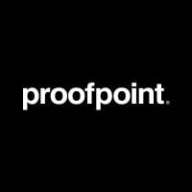

Proofpoint Email Protection and Microsoft Exchange Online Protection compete in the email security space. Proofpoint stands out for its comprehensive threat detection, while EOP is highlighted for its seamless integration with Windows and Office 365. Each has distinct advantages, making them appealing to different user needs.
Features: Proofpoint excels with targeted attack prevention, business email compromise protection, and reliable sandboxing. Its URL rewriting and detailed reporting enhance its threat detection capabilities. In contrast, EOP's integration with Microsoft environments is complemented by Safe Links and Safe Attachment features, providing layered security within its ecosystem.
Room for Improvement: Proofpoint's main challenges include its high cost and the need for better support in complex environments. Users have called for improved integration of features and clearer pricing models. EOP could enhance its user experience by providing more intuitive interfaces and addressing issues with gray emails. Improved technical support and clearer differentiation from the broader Microsoft suite are also desired.
Ease of Deployment and Customer Service: Proofpoint is praised for its responsive technical support, although logistical delays arise from time zone differences. Meanwhile, EOP benefits from Microsoft's extensive support infrastructure, yet users report mixed experiences with documentation and navigation. Proofpoint offers flexible deployment options, whereas EOP features strong integration with Microsoft's ecosystem.
Pricing and ROI: Proofpoint is considered expensive compared to others but is valued for its strong security and high ROI in preventing breaches. Its pricing is often seen as a limiting factor despite its security value. EOP is more moderately priced and benefits from scalable payment options, though some users suggest price reductions for enhanced competitiveness. Its security value proposition, especially when bundled in Microsoft enterprise agreements, is appreciated.
Microsoft offers excellent 24/7 support.
My team is able to get the help they need when necessary.
I am familiar with the granular policy control feature of Proofpoint Email Protection, and I find their support excellent for modifying those policies.
Proofpoint is scalable for multi-site organizations with thousands of users.
The user interface of Microsoft Exchange Online Protection (EOP) has room for improvement.
Improving the search process by allowing searches with different types of parameters and facilitating searches within emails would be advantageous.
Proofpoint could expand its phishing detection capabilities to improve its efficiency.
More security could be implemented.
I believe they still need to improve by consolidating some portals, as currently, you have to log in separately to a few of them.
The pricing is reasonable.
Microsoft Exchange is more expensive compared to other services like Gmail.
I find the price of Microsoft Exchange Online Protection (EOP) to be fairly reasonable, and I have no problems with it.
Customers pay around $90,000 yearly for a 1,000-user organization, with the subscription license being the main expense, apart from implementation fees.
Additional costs do come in, but it enhances security.
We've benefited from the anti-phishing features of Microsoft Exchange Online Protection (EOP), as it has been quite accurate and has eliminated most of our phishing emails, making it really impressive.
It offers more features and better security, making it the best option for corporate environments.
In the last three years, has resulted in no antivirus problems.
The most beneficial feature of Proofpoint Email Protection is mostly spam filtering; it was very efficient, and we were very happy with the functionality as only relevant emails were allowed for mailboxes.
The main feature I find most effective is that Proofpoint Email Protection scans emails and quarantines the doubtful ones.
I appreciate that it's the industry leader, and its firewalling is very easy to manage and implement.
| Product | Market Share (%) |
|---|---|
| Proofpoint Email Protection | 8.2% |
| Microsoft Exchange Online Protection (EOP) | 5.4% |
| Other | 86.4% |


| Company Size | Count |
|---|---|
| Small Business | 24 |
| Midsize Enterprise | 7 |
| Large Enterprise | 10 |
| Company Size | Count |
|---|---|
| Small Business | 21 |
| Midsize Enterprise | 13 |
| Large Enterprise | 17 |
Microsoft Exchange Online Protection (EOP) is a comprehensive email filtering and security service designed to protect organizations from spam, malware, and other email-based threats. It provides advanced threat protection, anti-malware and anti-spam filtering, and data loss prevention capabilities.
With EOP, organizations can ensure the security and integrity of their email communications. It uses multiple layers of filtering and scanning to detect and block malicious content, including phishing attempts, viruses, and ransomware. EOP also leverages machine learning and artificial intelligence to continuously improve its threat detection capabilities.
In addition to its robust security features, EOP offers advanced anti-spam filtering to reduce unwanted and unsolicited emails. It uses a combination of reputation-based filtering, content filtering, and sender authentication techniques to identify and block spam messages.
EOP also includes data loss prevention (DLP) capabilities to prevent sensitive information from being leaked or shared inappropriately. It allows organizations to define policies to detect and prevent the transmission of sensitive data, such as credit card numbers or social security numbers, via email.
Furthermore, EOP integrates seamlessly with Microsoft Exchange Online and other Office 365 services, providing a unified and integrated email security solution. It can be easily managed through the Exchange admin center, allowing administrators to configure and monitor security settings, review reports, and manage quarantined emails.
Proofpoint Email Protection provides powerful filtering against spam, phishing, and malware, leveraging effective threat detection and blocking capabilities. This solution integrates smoothly with platforms like Office 365, offering a user-friendly dashboard for seamless operations.
Proofpoint Email Protection focuses on email security, ensuring protection against phishing, malware, and spam. It includes features like URL scanning, anti-phishing, anti-virus protection, and sandboxing for comprehensive threat analysis. Its advanced analytics through TAP and TRAP, along with strong integration abilities, make it appealing for handling email threats. While scalability and ease of deployment are advantages, challenges such as integration in complex environments, the cost, and limited local support require attention. Enhancements in search functionality, email encryption, and improved phishing detection are also needed.
What are the key features of Proofpoint Email Protection?Industries adopting Proofpoint Email Protection include finance, healthcare, and education sectors, which benefit from its robust email security measures. Educational institutions prioritize safe communication for staff and students, while healthcare organizations focus on protecting sensitive patient data. Financial services benefit from preventing data breaches and fraud through advanced threats management.
We monitor all Email Security reviews to prevent fraudulent reviews and keep review quality high. We do not post reviews by company employees or direct competitors. We validate each review for authenticity via cross-reference with LinkedIn, and personal follow-up with the reviewer when necessary.